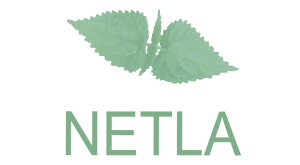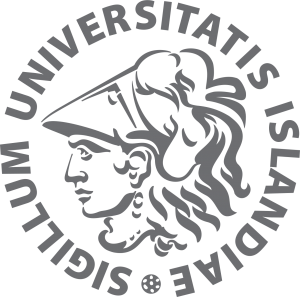General information on the journal
Netla – Online Journal on Pedagogy and Education (Netla – Veftímarit um uppeldi og menntun) publishes academic articles in Icelandic and English, as well as reports on development projects, discursive and reflective articles, essays, interviews, publication announcements and critical abstracts relating to the disciplines of pedagogy and education. When appropriate, a special effort is made to make use of the diverse communication capabilities of the internet and, in this connection, authors have in several instances published materials combined with sound and motion picture clips. Specialised editions of the journal have generally been either confined to a particular theme or associated with educational science conferences and have published peer-reviewed materials and academic articles.
The journal is mostly published in Icelandic, although peer-reviewed articles are accompanied by abstracts in English and the journal encourages its contributors to publish articles in English with an international readership in mind. The publication of articles in other languages is open to consideration. All persons, whether in Iceland or abroad, may send contributions to the journal and all material relating to pedagogy and education will be considered by the editorial board, whether this is based on research and academic studies or insight and experience.
The editorial board comprises members of academic staff at the University of Iceland School of Education. The board has an advisory role to the editor of the journal. Netla’s specialised and conference editions have generally been administered by a special editorial board under the auspices of the University of Iceland Educational Research Institute in consultation and cooperation with Netla’s editorial board.
There are no fixed publishing dates for Netla – Online Journal on Pedagogy and Education, material is published as soon as it is ready. It is possible register on a mailing list and receive notifications of new material as required. Those who are interested in publishing in Netla can contact the editor. Please note that articles cannot be submitted in December. The editorial boards of Netla´s conference and special publications request contributions specifically. All articles from the journal’s establishment in 2002 as well as conference and special publications from 2009 can be accessed on the website of Netla – Online Journal on Pedagogy and Education at https://netla.hi.is. We are happy to receive any comments on the publication
Peer-reviews and decision on publication
The publication of articles is, on the one hand, determined by academic content and the value/validation of research and, on the other, the question whether articles are relevant to those involved or interested in matters relating to pedagogy and education.
Decisions by the editorial board on the publication of peer-reviewed articles are based on the professional assessment of a minimum of two specialist reviewers and authors’ responses to comments and suggestions. Reviewers enjoy full anonymity and care is taken that one of them, or both, have a doctorate. It is also attempted to ensure that the reviewers approach the task from different perspectives.
Reviewers’ comments on articles are submitted to authors usually with a decision as to publication or rejection. Articles can be provisionally accepted, on condition that professional criticisms are responded to. In such cases, authors resubmit their articles with amendments and in a cover letter explain their responses to reviewers’ comments. Then the article is reviewed afresh and, in many cases, new suggestions added or earlier comments reiterated before the article is finally accepted. Articles which fail to satisfy requirements regarding presentation and content are rejected.
The main rule is that articles have not been published elsewhere. Nevertheless, translations of previously published articles can be accepted if earlier publication is clearly established. Authors are required to provide relevant information if an article is based on their degree dissertation, written in cooperation with others or if the task of writing the article has received grants. The first author of an article is regarded as the main author and assumes responsibility for communication with the editor and potential readers of the article.
Peer-reviewed articles are placed in a special category in Netla’s catalogues and identified in the following manner: Peer-reviewed article published [date]. Other articles are usually reviewed by one person, but are otherwise subject to the same editorial processing as other reviewed articles. They fall into the category of edited articles in Netla catalogues and are identified in the following manner. Article published
At year’s end the editors send all reviewers a thank-you letter for their work which can be used to confirm reviewers’ contributions when appropriate.
Guidelines to authors for preparing manuscripts
The authors of peer-reviewed articles are required to submit two manuscripts to Netla, one in final format and another without personally identifiable details. Peer-reviewed Netla articles should be 6 to 10 thousand words, including references and an abstract in Icelandic, but without abstract in English and information on authors. Authors are required to comply with accepted conventions regarding academic presentation, scientific work practices and a high standard of final preparation. The APA Style standard is required in the presentation of quotations, citations and reference list.
Guidelines in Icelandic regarding those requirements are on the website of the School of Education Writing Centre; http://ritver.hi.is Another source in Icelandic is Handbók um ritun og frágang (Manual on Writing and Layout) by Ingibjörg Axelsdóttir and Þórunn Blöndal.
Below are suggested sources when citing the main curricula of compulsory and upper secondary education:
The Icelandic National Curriculum Guide for Compulsory Schools (2011). Reykjavík: Ministry of Education, Science and Culture (2013).
The Icelandic National Curriculum Guide for Upper Secondary Schools (2011). Reykjavík: Ministry of Education, Science and Culture (2012).
The authors of peer-reviewed articles must keep the above criteria in mind, but otherwise have, in consultation with the editor, relative freedom regarding length, format and content.
All articles are read through in Icelandic, English and with regard to the APA referencing style. Nevertheless, authors are expected to pay careful attention to language use in their articles and to specifically check citations and reference lists before submitting an article for publication. The editorial board reserves the right to alter wording or spelling as part of final preparation. The author is ultimately responsible for a published article and amendments can be made if mistakes or contestable issues emerge after an article has been published.
Abstract and keywords
Reviewed articles shall be accompanied by an abstract in English of 600-800 words as well as the article title in English. Abstracts in Icelandic shall be shorter, or 200-300 words. In addition four to six suggested keywords shall be included in Icelandic and English. The abstracts of edited articles should be identical in Icelandic and English, 200-300 words, including one final paragraph relating to the author or authors.
Information relating to authors
A peer-reviewed article shall be accompanied by information relating to authors in Icelandic and English, approximately 60-70 words in each language, stating authors’ education and current line of work. Authors’ field of research shall be indicated as well as email address. This information is also accompanied by the name of the institution, in Icelandic and English, where the authors’ are currently employed. More specific details relating to authors shall be submitted in a separate document.
Information regarding the origin of figures and other data
Authors of figures and origin of other data must be indicated as appropriate. In the event of a large volume of pictorial materials or suchlike, a special register can be compiled containing information on origin.
Submission of articles in a template
Articles shall be transferred to a template. Care must be taken to preserve the relevant writing areas and style designs. The template is a Word processing document with texts in the appropriate styles. It is possible to highlight individual text samples and paste a text without formatting details from a source document (for example by using the command Paste Special > Unformatted text) and, when transferring from one document to another, let the source text adopt the characteristics of the target document. Another method is transferring the entire article unformatted and then use the template to choose appropriate styles for the text. In both instances it is possible to obtain clear text, with appropriate styles for authors’ names, name of article, abstracts, headings, main body of text, indented quotations and figure captions.
The document also contains examples of the layout of figures and tables which can be used for support. Tables, figures and graphs shall be specially marked with sequential numbers (e.g., Figure 3, Table 2). Captions are placed above figures (e.g., Figure 3 – Teachers’ meeting autumn 2012) and the heading of a table is placed at the top (e.g., Table 2 – Organisation and work plan winter 2012 to 2013). Comments can be placed under a table as shown in the template.
The editorial board usually carries out some amendments in the final stage and completes the final layout of articles. Nevertheless it is important the authors carefully plan their presentation so that the publication can be finalised as smoothly as possible.
Language policy, spelling and punctuation
Authors shall take good care of their language use, select the appropriate style and comply with official regulations regarding spelling and punctuation.
Chapter division and table of contents
Clear chapter divisions render an article more readable. Authors should divide articles into named chapters and subchapters as appropriate. Chapters are generally not numbered. Outlining the main contents of an article at the outset for readers’ convenience is recommended. In the case of a research article, the background of the research must be clearly delineated, including the relevant theoretical framework, methodology and conclusions. The final chapter must contain a summary and a clear interpretation of results.
Footnotes
Additional material or explanations can be placed in footnotes, although this method should be used in the utmost moderation. Sometimes thanks or comments are added after the main body of the article and before the reference list.
Typefaces and symbols
Typographical variations are to be applied in moderation. Italics are used to identify the titles of books, journals or chapters. Italics may also be used when a concept is introduced within the text, or first named, or for emphasis when appropriate. This typeface has also been used to denote certain “signal words” which indicate meaning and foreign words, often placed in brackets for further explanation or information.
Quotation marks (quotes, inverted commas) are to be used in the following manner:
Double quotes are used to earmark short, verbatim citations (sometimes limited to 25 words or fewer), otherwise the citation is indented and without quotation marks. The quotation marks can also define a special meaning or direct speech.
The rules allow single quotes to be used in the same position as double quotes to identify a specific meaning or direct speech.
The APA Manual (sixth ed., p. 92) states: “Use double quotation marks to enclose quotations in text. Use single quotation marks within double quotation marks to set off material that in the original source was enclosed in double quotation marks”
(Translator’s addition, July 2020 – RK)
If authors need to use special characters, such as phonetic symbols, those can be highlighted in a different colour to facilitate checking and final layout.

 Háteigsvegur v/Stakkahlíð
Háteigsvegur v/Stakkahlíð